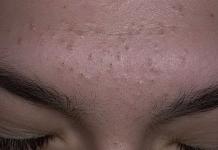Wood is a material that has long been used for facing baths and saunas. That's where the tree the best way reveals its properties - the ability to create a microclimate and perfectly retain heat.
In truth, there is simply no alternative to wood for use in humid and hot environments. Accordingly, it is better to sheathe the bath from the inside with a wooden clapboard. Below is the technology for the phased lining of the bath with clapboard inside.
Finishing the lining of a bath or sauna has its own characteristics, which must be taken into account even at the stage of selecting wood.
When choosing lining for facing the bath, you need to consider:
- high temperature;
- temperature fluctuations (differences);
- humidity level;
- budget.
What lining to choose for a bath
Selection criteria are determined by the characteristics and properties of lumber:
1. Board type
For finishing with a pair of wooden clapboard, it is better to give preference to eurolining.
- Firstly, because it has a large groove-tooth system (the length of the ridge reaches 8 mm).
- Secondly, because it is guaranteed to have compensation slots on the back of the lamella, which contributes to the ventilation of the coating and prevents possible cracking of the lamella.
- Thirdly, because the lining is already pre-treated with wood protection products that can be used in the bath.

2. Variety of lining
For a steam room, only the first or highest (elite) grade of wood is suitable in which there are no knots, wormholes, etc. Please note that even live knots can gradually fall out under the influence of temperature changes.
3. Type of wood
To understand which lining for a bath is better, you need to know the characteristics of each breed. We will not review all the breeds available on the market, but will focus on those recommended by professionals.
The clapboard finish of the bath can be made of hardwood and conifers. The choice depends on the purpose of the bath room: steam room, dressing room, washing room, shower room, as well as on the properties of the wood itself.
The most popular material for a steam room in a bath or sauna is hardwood lining. Their common advantage is that the wood does not heat up in the sauna, and cannot cause burns when touched, and is also resistant to moisture.
Lining linden for a bath
The most popular for saunas and baths is linden lining. The advantages of this wood are the ability to create a special microclimate. From a utilitarian point of view, the strength of the rock, resistance to drying out, and also beautiful colour and structure of wood. Linden is considered an energy donor.
Aspen lining for a bath
The second most popular place for baths is occupied by aspen lining. Aspen wood is beautiful, soft and easy to work with. The peculiarity of the breed is that over time, aspen lining becomes only stronger.
Aspen is also good because it provides easy care for lining in the steam room. It is enough to lightly sand it when it starts to darken. And popular belief says that the aspen draws negative energy from a person.
Lining from an alder for a bath
In third place was an alder lining. From a medical point of view, alder is good because it contains tannins. The wood of this breed is hygroscopic, has a low coefficient of thermal conductivity. However, the high cost hinders its ubiquitous distribution.
Note. Lining made of linden, aspen, alder is usually sold in short pieces. Commercial length up to 3 m. This should be taken into account when planning the finishing of the bath and making the calculation of the material.
Oak lining for a bath
The most expensive and difficult to process material is oak lining for a bath. But it does not rot, does not lose its properties and can be installed in a sauna without the slightest additional processing. Unfortunately, all this is not available to everyone due to the high cost of oak lining.
A similar situation is with ash clapboard - a very expensive and rare lumber for bath sheathing.
A common disadvantage of hardwood lining is that it loses color over time and needs to be protected.
Conifers are rarely used in the steam room. Because the resin that the lining of coniferous species (pine, spruce) emits makes it practically unsuitable for use in a steam room. They are more suitable for washing and dressing rooms. This is facilitated by indicators such as resistance to moisture and low price. In addition, coniferous lining is easier to process, has a beautiful structure and a rich palette of shades, allows you to veneer rounded shapes and does not need additional processing (with the exception of deresining). Often a pleasant coniferous aroma also becomes an argument in favor of lining from needles.
Do-it-yourself sheathing of a bath with clapboard inside
Ways of fastening lining
The first step is to choose a method of fastening the lining. There is no unequivocal answer on how to properly fix the lining in the bath, horizontally or vertically (along or across). Each master defends his point of view. But summarizing their statements and user reviews, we can draw conclusions regarding the ways of laying the lining.
Laying lining along has become more widespread due to the relative simplicity, convenience and high speed of work, and due to this, the lower cost of installation. Moisture (condensate) easily flows down the vertically arranged lamellae. But, by the way, it also easily rises up the microcapillaries that make up the wood. With this fastening, the tongue-and-groove system is more protected from water ingress.
The vertical fastening of the lining allows more heat to be accumulated inside the steam room, again, because the horizontal fastening of the crate timber interferes with the free movement of air. Experts note that vertical cladding is justified for saunas with their dry steam regime.

Laying the lining across has advantages in view of the fact that the board is fastened with a spike up, which means that water ingress is also unlikely, as with vertical. At horizontal mount lining is equipped with a vertical frame (crate), which contributes to natural circulation air between the panels and the wall.
Another argument in favor of the horizontal laying of the lining in the bath (steam room) is the ease of replacing the boards below. The fact is that the floor in the bath is not just a wet place, but a wet place. Naturally, the lower boards are subject to more rapid decay than the upper ones. Replacing several bottom boards is easier than cutting off the bottom of all vertical ones. In addition, shrinkage from constant temperature changes is more noticeable on vertical mount. The horizontal method of fastening the lining is better for those who have a classic wet Russian bath.

Based on the foregoing, everyone can decide for himself how to fix the lining in the bath - vertically or horizontally.
 Finishing the sauna with clapboard provides for the device of the crate. This is due to the fact that the presence of the crate makes it possible to insulate the sauna.
Finishing the sauna with clapboard provides for the device of the crate. This is due to the fact that the presence of the crate makes it possible to insulate the sauna.
If there is no such need, then air circulates freely between the frame, condensate drains, the likelihood of rotting of the lining, the appearance of fungus and mold on the walls is reduced.
The crate for the lining for the bath is made only from a bar, which is covered with a primer. The use of galvanized profiles for drywall is unacceptable.
The crate in the bath makes it possible to organize the wiring in the steam room. For example, under the lamps.
Note. To protect against moisture, the wires are laid in a metal corrugation.
The internal insulation of the bath consists of several layers. heater in this wet room needs special fixing.
 To begin with, waterproofing is laid on the wall. It can be nailed to the wall or fixed with battens.
To begin with, waterproofing is laid on the wall. It can be nailed to the wall or fixed with battens.
Cotton wool is placed between the bars of the crate. By the way, cut with an overlap of 10 mm. cotton wool will tightly settle between the frame beam and will be securely fixed in them. A foil vapor barrier film is laid on top of the cotton wool, which reflects heat. The vapor barrier is fixed with a stapler to the beams of the crate.
The film is overlapped and must be glued with aluminum tape. Next, narrow slats are stuffed, the so-called counter-rail. Boards up to 20 mm thick are used for the countertop. The purpose of the countertop is to provide a ventilation gap between the lining and the vapor barrier.
A simpler option is to use foil-coated basalt wool, which is laid with foil to the lining (also with a gap).
An important condition for full functioning is ventilation in the bath.
 Therefore, when installing the crate and laying the insulation, do not forget to mark a place for ventilation holes.
Therefore, when installing the crate and laying the insulation, do not forget to mark a place for ventilation holes.
It is preferable to use an aluminum corrugation with a diameter of 100 mm as an air duct. We remind you that for effective ventilation in the bath you need to place one hole under the ceiling, and the second at a height of 150-300 mm from the floor. Preferably next to the stove.
Note. Place ventilation holes need in accessible places to be able to regulate the flow of air.
In the sauna, only non-flammable thermal insulation material. That is why the use of foam is excluded. It is better to give preference to basalt wool.
Installation of lining in the steam room
Fastening the lining in the bath is done exclusively by a hidden method. Experts attribute this to three factors:
- Firstly, the hardware, twisted through, heats up and there is a risk of getting unpleasant sensations while touching the attachment point.
- Secondly, rough hardware can rust and ruin the lining surface.
- Thirdly, such a mount looks somewhat primitive and affects the appearance of the room.
 Hidden fastening methods include the use of nails, clamps or self-tapping screws. Regarding self-tapping screws, it should be noted additionally that the self-tapping screw can be twisted from the front side of the board, however, it must be closed with a wooden plug.
Hidden fastening methods include the use of nails, clamps or self-tapping screws. Regarding self-tapping screws, it should be noted additionally that the self-tapping screw can be twisted from the front side of the board, however, it must be closed with a wooden plug.
This method is quite laborious, so users are advised to fix the wooden lining with their own hands using nails and kleimers.
How to sheathe the ceiling in the bath clapboard
Finishing the steam room, as well as other rooms of the bath, starts from the ceiling. This is due to the fact that large thermal gaps are left on the ceiling, and the wall lamellas must rest against the ceiling.
 Installation wooden lining on the ceiling starts from the side of the entrance and is carried out only on nails or kleimer. And the point here is not even in the visual effect, but in the fact that the finishing nail is not able to withstand the weight of the ceiling from the lining.
Installation wooden lining on the ceiling starts from the side of the entrance and is carried out only on nails or kleimer. And the point here is not even in the visual effect, but in the fact that the finishing nail is not able to withstand the weight of the ceiling from the lining.
The boards that are nailed last are difficult to “plant” on the kleimer or drive a nail into the groove. In this case, he uses a finishing (hidden) nail that does not have a hat. In order not to damage the front surface of the lining, the nail should be finished with a finisher. And the nail installation site is cleaned sandpaper to avoid the appearance of roughness and, as a result, a splinter.
It is important that the ends of the lining are located at a distance of 40-50 mm from the wall of the bath. This is due to the fact that under the ceiling there is a higher temperature and the lamellas “play” more. And also with the need to leave a ventilation gap for air circulation through the wall.
How to sheathe the walls in the bath clapboard
 Wall decoration with clapboard starts from the corner of the room (steam room, sauna) and is implemented similarly to the installation of clapboard on the ceiling.
Wall decoration with clapboard starts from the corner of the room (steam room, sauna) and is implemented similarly to the installation of clapboard on the ceiling.
When installing, it should be noted that water can rise through the wood to a height of up to half a meter with a vertical mount and half as low with a horizontal mount. Therefore, at a height of 10-30 mm. a gap is left from the floor, which will protect the lower boards from rotting.
 It is impossible to join the lamellas of the wooden lining to the stop, as is done in the house, in the sauna. The tree swells and shrinks from humidity and temperature, so there must be a compensation gap for the “movement” of the wood.
It is impossible to join the lamellas of the wooden lining to the stop, as is done in the house, in the sauna. The tree swells and shrinks from humidity and temperature, so there must be a compensation gap for the “movement” of the wood.  The consequences of improper fastening (deformation, discrepancy) are shown in the photo.
The consequences of improper fastening (deformation, discrepancy) are shown in the photo. How to make a gap between the lining?
Execution technology: the next board is driven into the previous one until it stops. Then several marks are made along the seam lines (preferably not with a pencil, but with a sharp object). Then the board moves relative to the previous and intended marks. Since the lamella moves by eye, each subsequent board must be checked with a level.
 Advice. Mounting the lining on the wall will look more beautiful if you withstand the docking of the boards on the ceiling and wall.
Advice. Mounting the lining on the wall will look more beautiful if you withstand the docking of the boards on the ceiling and wall.
The upper ends of the boards adjoin the ceiling closely.
Fixing skirting boards for wall paneling and decorative elements
Plinth, corners, other accessories for finishing the sauna can not be "planted" on the glue. For their fastening are used exclusively finishing nails with subsequent grinding of the installation site.
How to sheathe a doorway with clapboard
 Doorways are given Special attention. The slopes in them are finished with the help of lining, cut to the desired length. And the openings themselves are framed with platbands.
Doorways are given Special attention. The slopes in them are finished with the help of lining, cut to the desired length. And the openings themselves are framed with platbands.
How to sheathe clapboard slopes on windows
Directly in paired windows they are rarely equipped, more often they are made in a dressing room or washing room. In any case, it will not be superfluous to know how to make slopes from lining.
In order to simplify the installation of lining, professionals advise to install a slope in window opening using the starting bar to plastic lining. Then the wooden lamella is inserted into the bar with one end, and the second is attached to the crate beam. This framing method is ideal for its simplicity, and is suitable for those who install in the bath metal-plastic windows. But, it should be remembered that the thickness start profile is 10 mm.
 The second installation option is to install a frame for the slope, lining it with clapboard and then decorating the place where the clapboard adjoins the window with decorative strips.
The second installation option is to install a frame for the slope, lining it with clapboard and then decorating the place where the clapboard adjoins the window with decorative strips.
This method of finishing the slopes with clapboard is best used by those who have wooden windows installed in the bath.
 If the thickness of the wall is small and the slope is not wide, then you can veneer it with a wooden lining for lining.
If the thickness of the wall is small and the slope is not wide, then you can veneer it with a wooden lining for lining. The material was prepared for the site www.site
Finishing washing in the bath clapboard
Installation of lining in a washing room is carried out similarly to installation in a steam room, but it should be remembered that the bottom boards or ends of the boards during vertical laying should be at least 30 mm apart. from the floor.
Users note that they have proven themselves well in the interior decoration of the washing plastic panels and PVC lining. Wood decor allows you to create desired design and at the same time ensure long-term operation of the finish. Ceramic tiles and tiles also look great in the sink.
How to sheathe the dressing room of the bath with clapboard
The dressing room is designed to leave your things in it and take a break after soaring. In more modern versions baths, the dressing room serves as a rest room in which furniture and appliances are installed. Due to the fact that this room is not much different from any other in the house, the installation of the lining does not differ in features.
 Due to flammability, lining near the furnace firebox is not mounted. It is better to finish the furnace place with brick, stone, in extreme cases, sheet metal or other non-combustible materials.
Due to flammability, lining near the furnace firebox is not mounted. It is better to finish the furnace place with brick, stone, in extreme cases, sheet metal or other non-combustible materials.
 It is worth noting that on the ceiling it is also not allowed to connect the chimney pipe to the lining. Therefore, a stainless steel screen is installed on the ceiling. Behind the screen, the pipe should be wrapped with basalt wool.
It is worth noting that on the ceiling it is also not allowed to connect the chimney pipe to the lining. Therefore, a stainless steel screen is installed on the ceiling. Behind the screen, the pipe should be wrapped with basalt wool. Installation of lining near the sauna heater
But the heater (the place where stones traditional for the Russian bath are stacked) is not only possible, but necessary to finish the lining. Moreover, preference should be given to hardwood lining. Since wood heats up less than stone, wood trim heaters will protect sauna users from thermal burns.
Now you are familiar with how the lining is installed in separate rooms of the bath, you know how to fix the lining in the bath correctly. So, there are no obstacles to finishing the bath with a wooden clapboard with your own hands.
Preliminary and finishing sheathing of the steam room - important points in bath construction. How this will happen, what the result will be, depends solely on the taste, financial capabilities and skills of the owners. The main thing is to do everything right and not to miss important moments.
Preparatory work before sheathing
First you need to make a sketch. You may prefer to make one wall of stone-look tiles or natural stone, and sheathe the rest with wood, maybe stop at the traditional option for the entire room - lining, decide to use glass or something completely original. Do not forget that all materials must be resistant to water and high temperatures, as well as bioinert, that is, unsuitable for microbial life. As you prepare, consider:
- where to install the stove, what kind it is (electric, solid fuel, liquid fuel; gas);
- what finishing materials will be used for the floor, walls, ceiling;
- where will the lights be placed?
- what material will the steam room be insulated inside;
- type of hydro and vapor barrier.
The walls and floor around the stove are sheathed with non-combustible materials. This requirement can be neglected only if a gas or electric furnace is used.
After the final version of the steam room sheathing is determined, you can proceed to the construction of an accurate drawing and the calculation of materials. It is assumed that by this time the stove and the chimney to it, if necessary, have already been installed. To do everything right, the skin must be carried out in the following order:
- floor;
- walls;
- ceiling.
There are exceptions, but it is better to stick to this sequence. In this case, possible alterations will be minimized. Options finishing there may be several floors in a room with very high temperatures.
- Ceramic tiles are a rational solution for maintaining room hygiene. To make it more pleasant for the legs, you can lay wooden lattices on top.
- Natural stone is a spectacular, but rather expensive option.
- Boards. It is important to choose the right type of wood.
- Clapboard or block house. It is also necessary to stop the choice on the optimal type of wood in terms of price and quality.
Any of these options is good, it all depends on the capabilities of the owners. The complexity of the work will be approximately the same.
Stage 1: warming and sheathing the floor of the steam room
The floor and ceiling are the main sources of heat leakage, so they need to be isolated as much as possible. If you take up finishing and insulation, then it is assumed that the subfloor is already ready. The floor can be done immediately on top of the draft or on the screed. The device layout will be very similar. If you plan to do it indoors wooden floor, then the layers of the "pie" will be as follows (listing from bottom to top):
- Draft floor. It is roughly processed boards or other wood-based materials with low hygroscopicity. Draft boards stacked on top of the bars attached to the logs.
- waterproofing layer. It will protect the insulation from moisture coming from outside the bath. It can be bulk insulation, ordinary PE, special materials.
- Insulation. It is best to use expanded clay - it retains heat well and is inexpensive. Glass wool is also suitable mineral wool, expanded polystyrene or ready-made multilayer materials (insulation with waterproofing).
- Another layer of waterproofing.
- Air gap. Between the finishing sheathing of the steam room and the waterproofing, it is necessary to fill the slats so that the moisture does not stagnate and does not have contact with the boards from below.
- We fill the crate and attach the finishing floor to it.
If the floor in the bath will be with ceramic tiles, it is better, but not necessary, to do concrete screed. In this case, the "pie" is as follows:

Important: if a lot of water gets on the floor, you need to make it with a slope, equip a drainage system.
If you plan to sheathe with wood, then it should be made of dense, waterproof wood species impregnated with antifungal and water-repellent compounds. You can make a removable wooden floor, which will be disassembled into sections for drying.
Stage 2: insulation of the walls and ceiling of the steam room
By this time, a stove and a chimney to it, if needed, should be installed inside the steam room. Windows and doors can already be inserted without installing slopes / platbands. Then you don’t have to carefully cut the lining - all the flaws will hide behind decorative elements openings.
- Even before we begin to deal specifically with the decoration of the walls and ceiling inside our steam room, we need to resolve the issue with the electrician. We install plastic boxes and lay cables in them. Can be attached to walls and ceilings with holders. Further, when we lay the layers of the wall and ceiling "pie", do not forget to bring the wires out. Wires must be intact to avoid short circuit. It is better to choose lamps in housings in a moisture-proof design.
- We build wall and ceiling "pies", starting with a waterproofing layer. We waterproof the walls liquid composition or film.
- We fill the crate, between the layers of which the insulation will be attached. The pitch of the vertical rails is selected according to the size of the insulation sheets, if it has factory dimensions. If the material is rolled, then the optimal step would be 60–70 cm. The depth of the crate should be such that a layer of insulation, screen waterproofing and still remain air gap, which is necessary for proper circulation air. We fix the crate: to the tree - with self-tapping screws, to concrete - with dowels.
Important: The crate must be placed on one vertical and horizontal levels. If some boards stick out or "sink", then it will be difficult to fix the lining later.
- We install insulation inside the crate. We start from the bottom, we lay the sheets very tightly.
- To prevent the insulation from getting wet, we protect it with a waterproofing layer. And in order not to lose heat, this waterproofing should also be a thermal screen. So perfect choice- rolled waterproofing with foil. We fix it on the crate with slats. All joints between the pieces of the roll (overlapping) are glued with adhesive tape or fastened with a stapler.
Stage 3: horizontal cladding of walls and ceiling with a pair of clapboard
Before sheathing the steam room, it is necessary to process the existing frame and lining with a bio- and moisture-proof coating. What to do first - floor or ceiling, does not have special significance, but the pros prefer the ceiling. You have to choose between horizontal and vertical installation lining on the wall. Horizontal plating is preferable for two reasons:
- If the lower rails start to deteriorate from water and fungus, they can be easily replaced. If the same thing happens in the steam room, where the lining is mounted vertically, then the material will have to be completely removed.
- Horizontal layout makes the room visually larger.
Before laying the lining, you need to put it in the steam room for 1-2 days so that the boards get the right humidity and temperature. Then they will give minimal shrinkage.
The lining is laid from the floor of the steam room, starting with the groove down. Fastened with small galvanized nails or clamps to the frame. Each subsequent board is driven onto the lower spike with a wooden or rubber mallet to keep the connection strong.
It is necessary to carry out the sheathing of the steam room, starting from the corner. Then finish the adjacent wall and so on. If the lining was short, then the joints are poured mounting foam. Over it is stuffed decorative wooden lath(do not use plastic or other materials!).
At the end of the wall cladding, the corners are closed similarly to the finishing of the joints. Now you can move on to the ceiling, which is sheathed in the same way as the walls. Upon completion of work around the perimeter of the ceiling is stuffed wooden plinth. We sheathe the walls and floor around the stove with stainless steel sheets, and the job is done.
The work on the lining inside the steam room is over. It remains only to do the installation of lighting, furniture and finishing decor. And you can enjoy a light steam in your own cozy bath.
Lining is considered ideal solution for finishing the steam room, because it is natural wood creates the necessary atmosphere and keeps heat well. When planning lining with lining inside the bath with your own hands, you should take into account all the necessary nuances. Even minor deviations from the rules threaten that the coating will not perform its functions and will quickly become unusable.
Sheathing the bath with clapboard involves the use of materials that can withstand certain conditions that are typical for this room. These include:
- High temperatures.
- Constant fluctuations in humidity.
- Ingress of water and various substances.
Therefore, it is necessary to carefully approach the choice of products. It is believed that the best option there will be eurolining. This is due to the following factors:
- Reliability of fixation due to large sizes groove systems.
- The presence of compensation slots located on the wrong side. They prevent cracking of elements.
- Good quality impregnation with protective equipment, carried out directly at the factory.
 Eurolining - the most reliable material for bathroom decoration
Eurolining - the most reliable material for bathroom decoration On a note! For work, the material of the first or upper class(varieties). It has no damage and knots that will fall out over time.
Selection of wood species
The bath consists of several rooms that perform certain functions. It is advisable to provide for the presence of a certain type of wood for each room. It must be borne in mind that not every type can be used for this kind of finish.
Linden
 Linden - a commonly used lining option for finishing a bath
Linden - a commonly used lining option for finishing a bath One of the most popular options. Linden is able to create a microclimate in the room, which will be saturated with cleanliness and comfort. We must not forget about the excellent qualities of such material. The boards are durable, resistant to various influences, retain their color and structure for a long time.
Aspen
A feature of this type is that over time it only becomes stronger. This product is easy to work with. Even after a long time, when the tree darkens, it is enough to sand it to return saturated color surfaces.
The above options can be used in all parts of the bath, but are most often used in the steam room.
 Aspen lining is most often used in the steam room
Aspen lining is most often used in the steam room Cedar
It is allowed to use even in steam rooms, but this breed heats up much more strongly than hardwood, therefore, at high temperatures, discomfort from contact may occur.
 Cedar product tends to get very hot
Cedar product tends to get very hot Pine and spruce
Such types are used mainly for washing and dressing rooms. The fact is that these rocks intensely secrete resin and quickly heat up. But it should be noted that this option is much cheaper than the previous ones and has a wide decorative range.
On a note! Conifers need additional processing - deresining, otherwise it is likely that the surface of the walls and ceiling will be covered with numerous streaks.
 Lining from coniferous varieties wood is most often used for finishing the dressing room and washing
Lining from coniferous varieties wood is most often used for finishing the dressing room and washing
Choice of mounting method
Facing a bath with a clapboard with your own hands begins with the choice of a layout for the elements. There are two main ways: horizontal and vertical. Each of them has its own advantages and disadvantages.
Horizontal option
Horizontal option has the following advantages:
- It is assumed that the fastening will be carried out with a spike at the top, which will reduce the likelihood of water ingress and stagnation.
- This method is also good because the frame for it is vertical, which means that the air will circulate more evenly in the resulting space.
- It is also impossible to exclude the fact that boards, even the highest quality ones, are subject to decay. This happens especially quickly at the very bottom. Horizontal fastening technology makes it possible to replace only the material that has actually undergone destruction.
- With this type of installation, drying out is less noticeable.
 Horizontal mounting option lining in the bath
Horizontal mounting option lining in the bath We must not forget that oak wood is considered one of the highest quality, but its cost is very high.
Vertical option
Interior decoration of the bath clapboard vertical way produce quickly and easily. This technology has its advantages:
- Any moisture drains faster down the vertical elements.
- The tongue and groove system is less prone to water stagnation and destruction.
- This circuit maintains the temperature inside the room.
 Interior decoration baths in a vertical way
Interior decoration baths in a vertical way It is believed that this option is most suitable for baths with dry steam.
Installation of lining
Sheathing with clapboard from the inside of the bath or sauna is carried out on the crate. It is made exclusively from wooden beam, which is pre-treated with various antiseptics and primed.
Important! Cannot be used for frame metallic profile, even galvanized options in the steam room will quickly become unusable.
Creating a crate
The technology is:
- The beam is carefully prepared. For work, a non-planed version can be used, but necessarily treated with impregnations.
- The fastening of the racks is carried out clearly perpendicular to the location of the lining. Naturally, if a combination of vertical and horizontal schemes was conceived, then it is necessary to calculate in advance the correct location of the beam.
- The profile is attached to the wall with a dowel. It is taken into account that the size of the beam must be greater than the width of the insulation, if an option is used that fits into the free space.
- The distance between the racks should be 50-60 cm. The correct fastening is checked by level and plumb.
- If irregularities are found, then board trimmings are additionally placed. In the case of strong curvature, suspensions are used for the frame of the GKL plates.
 Installation of crates in the bath under the lining
Installation of crates in the bath under the lining On a note! Need to take care of good ventilation. It is arranged in two places. The first hole should be located under the ceiling, the second - at a distance of 30 cm from the floor.
Lamella fastening
How to fix the lining in the bath? Most in an efficient way counts concealed fastening(carnations and kleimers). There are several explanations for this:
- If the fasteners are screwed through the front part, then there is a high probability of touching this place, which will lead to unpleasant sensations (small burns).
- The metal is subject to oxidation, which means that stains may appear that spoil the entire decorative look.
- A visible fastening indicates that the master was in too much of a hurry to finish the work, neglecting the appearance of the room.
 Installation of lining with hidden fasteners
Installation of lining with hidden fasteners The work takes place as follows:
Stage one - ceiling lining.
All events start with ceiling structure. The fact is that it is here that the necessary thermal gaps are left.
- Laying starts from the entrance to the room. A clamp is used as a fastener. It securely fixes each element, which cannot be said about nails.
- The slats are placed at a distance of fifty millimeters from the walls, which will compensate possible deformations. And also it will serve ventilation gap allowing air to circulate.
- The first fragment is placed in its place and fixed with hidden carnations. Next, the clamps are installed.
- Products are grooving. Now only clamps are used.
- The last element is difficult to lay, so it is fixed on hidden carnations.

Stage two - work with the walls.
The technology exactly repeats the one used for the ceiling. But the following is taken into account:
- The presence of capillaries in wood allows water to rise to a certain distance, and therefore it is advisable to leave a technical gap. To do this, 15-30 mm recede from the floor.
- The boards adjoin closely to the ceiling, but for walls, the lamellas cannot be connected through the groove until they stop. The fact is that the tree is in constant motion, so there must be space.
It should be noted that violation of such simple rules leads to swelling and deformation.
 Cladding walls with clapboard involves observing simple rules
Cladding walls with clapboard involves observing simple rules The technology used makes it possible to sheathe the bath with clapboard in all rooms.
Should know! The lining should not be placed next to the firebox and chimney pipe. But the place around the heater can be sheathed with hardwood lamellas.
Stage three - additional processing.
After the installation is completed, additional processing of the lining is carried out. This is necessary in order to protect the tree from destruction. Works are carried out with various impregnations on natural basis. Waxing is best - when the surface is carefully covered with wax. The number of layers depends on the type of room. For a steam room, one is enough, and for a washing room - at least two.
 To protect the lining from destruction, additional processing is carried out
To protect the lining from destruction, additional processing is carried out It is important to purchase high-quality impregnations that have the necessary certificates.
Everyone wants to know how to properly sheathe the premises of the bath and save a little. There are some options for this:
- For each room, select different wood. For example, places in the steam room where it is supposed to lie or sit are lined with hardwood, the rest with cedar. The dressing room and the washing room are ennobled exclusively with coniferous options.
- You can also lower the grade (class) of lining. If the rest of the premises need high-quality material, then the dressing room looks great with a surface on which there are traces of knots and different colors.
- It is better to do all the work yourself. This will not only save a lot cash, but also to be sure that all events are carried out with exceptional quality.
In construction, it is very important that the material is as natural as possible. The most environmentally friendly of all is wood.. Wood products have a beautiful appearance and have thermal insulation properties. In addition to supporting and enclosing structures, wood is also used as a finishing material. Very often, the lining of the bath inside the clapboard is performed. Thanks to its qualities, the lining made of wood has gained wide application in construction.
Types of lining and classification
Lining is divided by type of wood:
Clapboard made of wood conifers.
- Pine. The most common wood for lining. It has a beautiful appearance and low cost. Over time, the pine product begins to darken.
- Spruce. Northern spruce is used to make lining. It is more durable and has a beautiful appearance. Like pine, it darkens with time.
- Canadian cedar used for bath decoration. It is not cheap, but it has excellent technical specifications and beautiful appearance.
Clapboard made of wood hardwood.
- Oak. Beautiful and durable material, easy to process, expensive.
- Aspen. Beautiful light color. Has thermal insulation properties. Good for a bath.
- Linden. It is very well suited for finishing a bath, because the material does not heat up much and gives off a pleasant aroma.
- Alder. indoors with high temperature material does not heat up. Also, it almost does not dry out and does not warp.
- Abash. African oak has high strength and softness of the material. Such wood does not dry out, does not warp and does not heat up. Has a beautiful appearance. Abash cost is quite high.

Often, inner lining clapboard baths are made of hardwood. In the bath, high temperature and under its influence coniferous wood releases resins. Hardwoods have practically no resin compounds, so resin is not emitted.
Of great importance is the type of wood from which the lining is made. There are 4 main varieties:


Also, lining is divided by type of profile:
- Eurolining.
- Softline.
- Calm.
- timber imitation.
- Block house (log imitation).
- Landhaus.
- American.
Pros and cons of lining

Advantages:
- natural and environmentally friendly pure material which does not emit harmful substances.
- Beautiful appearance. Depending on the type of wood, the lining has various shades and texture.
- Resistance to mechanical damage.
- A comfortable microclimate is created in the room.
- Ease of installation.


Disadvantages:
- High material cost.
- The need for constant care for wood.
Methods for attaching the lining to the wall
Listed below are the 5 main ways of attaching the lining to the wall.
 The simplest and convenient way which does not require specialization. Installation in progress using small nails and grips (cleats). In this way, it is permissible to fasten only light lining, because. grips are not able to hold a lot of weight.
The simplest and convenient way which does not require specialization. Installation in progress using small nails and grips (cleats). In this way, it is permissible to fasten only light lining, because. grips are not able to hold a lot of weight.
A clamp is inserted into the lining, which is attached to the guide rail with a nail, screw or self-tapping screw. A rail is inserted into the groove and each subsequent rail is fastened in the same way. They must be fastened tightly enough so that there are no gaps. If the last row of lining does not fit entirely, and remains big gap, then the top row must be cut to size and fixed along the guides.
 With nails. It may seem that this method is simpler than the previous one, but in practice, chips, bruises and other damage to the material often occur. In addition, the process of performing work is not very convenient and time-consuming. Nails are driven in every 25 - 30 cm. For mounting a rail two meters long, 7 or 8 nails are needed.
With nails. It may seem that this method is simpler than the previous one, but in practice, chips, bruises and other damage to the material often occur. In addition, the process of performing work is not very convenient and time-consuming. Nails are driven in every 25 - 30 cm. For mounting a rail two meters long, 7 or 8 nails are needed.
First, the panel is marked in places where nails will be driven in. Then, at an angle of 45 degrees, the nails are baited into the edge with the groove. The panel is applied to the wall and then nails can be driven in. After installation, the caps are recessed so that the next lining panel can easily fit into the groove. After that, the next panel is mounted in a similar way.
This installation method cannot be used for thin lining, because it will break off.
 This mounting option is used for old-style lining. Sheathing with eurolining is somewhat different from the installation of an older lining. The device of the product consists in fastening with screws. To avoid splitting the wood, a hole is drilled in the places where the screw is screwed in. The drill should be smaller than the screw. The hole is countersunk to countersink the head of the screw. Fasteners are screwed to the limit with a screwdriver. The hats will not be visible, as they are covered by the next row of panels.
This mounting option is used for old-style lining. Sheathing with eurolining is somewhat different from the installation of an older lining. The device of the product consists in fastening with screws. To avoid splitting the wood, a hole is drilled in the places where the screw is screwed in. The drill should be smaller than the screw. The hole is countersunk to countersink the head of the screw. Fasteners are screwed to the limit with a screwdriver. The hats will not be visible, as they are covered by the next row of panels.
 Installation of lining with a stapler and construction staples
. The bracket is driven into the groove at an angle of 45 degrees. You need to have a stapler that is able to tightly drive the staple to the stop. In this case, the fasteners will in no way interfere with the installation of the next row of panels.
Installation of lining with a stapler and construction staples
. The bracket is driven into the groove at an angle of 45 degrees. You need to have a stapler that is able to tightly drive the staple to the stop. In this case, the fasteners will in no way interfere with the installation of the next row of panels.
 The fifth method of fastening is most often used for finishing saunas or baths. Screws act as fasteners. A hole is drilled at the mounting points and fasteners are screwed in with a screwdriver. The screws are tightened to the point where the head is sunk significantly. To hide the heads of the screws, a plug is driven into the hole where it is screwed.
The fifth method of fastening is most often used for finishing saunas or baths. Screws act as fasteners. A hole is drilled at the mounting points and fasteners are screwed in with a screwdriver. The screws are tightened to the point where the head is sunk significantly. To hide the heads of the screws, a plug is driven into the hole where it is screwed.
Over time, under the influence of high temperature, the tree may dry out a little, and the locations of the plugs will appear. To prevent this trouble, special compounds must be applied over the plugs.
The technology of performing work on the lining of the bath
- Preparatory work. All internal communications must be laid. Finishing material should already be purchased, unpacked and laid out in a drying room. Also, you need to have all essential tool, for high-quality and fast work, you will need:

- perforator;
- screwdriver;
- jigsaw;
- level;
- plumb;
- paint cord;
- square;
- a hammer;
- suspensions;
- fasteners (nails, screws, self-tapping screws, staples, clamps).
- Installing guides. The sheathing of the bath inside the clapboard begins with the installation of guides, they use an unplaned beam, which is mounted vertically in increments of 700 mm with the help of suspensions. First, the beam is fixed at the top and bottom, then along its entire height. It is important that all guide walls are in the same plane. To do this, 2-3 cords are pulled, which act as beacons, and guide rails are adjusted along them.
The bars are installed vertically if the lining is oriented horizontally and vice versa. True and reverse rule- if the lining is oriented vertically, then the guides on the wall are arranged horizontally.
- Frame processing. The design of the guides is treated with an antiseptic to prevent the occurrence of rot, mold and fungus in wooden structure. Also, the antiseptic protects the wood from insects. After processing, the frame must be given some time to dry.
- Space between guides filled with insulating material. Most often, mineral wool is chosen. It is cut into mats slightly larger than the space between the guide rails. This is necessary so that the heat-insulating material fits snugly against the wall and does not fall out. It is important that mineral wool mats have not been overly compacted, this will adversely affect the thermal insulation properties.
- Waterproofing device. The heat-insulating material, especially if it is mineral wool, absorbs moisture, and the bath is the room where there is too much of it. For this reason, the insulating material defended waterproofing film . It should cover the entire area of the wall. The film is attached to wooden rails using a construction stapler.
- Slicing lining. The required length of the lining is measured, the place of sawing is marked and the material is cut. When marking, it is important to consider door and window openings. After this process, wall cladding is performed.
- Installation of lining. The lining of the bath from the inside with clapboard starts from the ceiling. A gap is left along its perimeter for deformation of the material. Wall decoration is carried out from the far corner. The first panel must be fixed especially firmly. Fastening is carried out in one of the ways indicated above. If the last row of lining does not fit, it must be sawn down.
Lining slats shouldn't be too close to each other., because the material, saturated with moisture, increases in size.
Wall lining should lag behind the floor by 3 cm.- For finishing openings on slopes starting rails are installed to which the lamellas are mounted. At the joints, special corner strips.
- Lining is a combustible material, therefore it is not mounted near the boiler. In this part of the building are arranged brick walls or they are sheathed with metal sheets.
- Material handling. In the dressing room, it is better to varnish the tree, which will protect and keep it on long years. In the washing and steam rooms, the lining is covered with protective wax or stain. This will give the material beautiful shade and help keep it as long as possible.




Bath cladding requires significant funds for the purchase of material and its device. There is an opportunity to reduce the cost of material. There is no high temperature in the dressing room and high humidity. Therefore, it does not require special finishing conditions. In the dressing room, you can make coniferous wood paneling. The floor does not have to be made of wood, but it can be made of ceramic tiles.

In the steam room itself, it is best to cover the walls of the ceiling and floor with clapboard hardwood. In addition, all lava beds and other auxiliary structures must also be made of such material. This is due to the fact that hardwoods do not emit resins and do not heat up under the influence of high temperature, which ensures a comfortable stay in the bath.
How to properly sheathe a steam room with clapboard, if from time immemorial wood has been the basis of a bath interior. Our ancestors used it both for construction and as finishing material without thinking about which lining to choose for the steam room and how to mount it correctly.
The return to wood is not a tribute to traditions, although it is not entirely true to talk about a return, wood has never been forgotten. The use of wood in the bath is not only economically justified, but also natural in terms of availability and low cost.
Do-it-yourself installation of lining with your own hands is quite realistic and does not require great work. Desired result obtained when right choice material and its quality fastening.
Factors affecting the duration of operation
So:
- Long service life is ensured by the type of wood from which the lining of the steam room is made with clapboard and its quality. Here one can note deciduous species, which include aspen, linden (see), alder, less often oak.
They have a lot of advantages, and since the density of wood in these species is very high, they quickly heat up and keep heat well. The only negative noted by practice is the acquisition of a dark color from high temperature and humidity. - You won’t let coniferous wood into the steam room, but in washing department She will delight her owners for a long time.
- The class of wood or its grade determine the duration of service. "Extra", "A", "B", "C" stand out. The first three varieties are among the most quality products, sheathing of the lining of the steam room is carried out with these materials.
On their surface there are practically no knots or places where they could be. Lining with knots cracks during operation. - You can't ignore this important factor longevity finishes, as a mounting method. A natural question arises, how to properly fix the lining in the steam room, if some photos show vertical mounting panels, horizontal on others, diagonally on others, and everywhere the finish looks beautiful.
Why use clapboard on a log wall
How better finish clapboard steam room, if the Russian bath has always been famous for its wet steam room and bare log cabin without additional cladding. The technology for obtaining steam in the steam room is quite simple, the walls are made massive, hygroscopic and heat-intensive.
Eminent artists portrayed steam baths as impressive in their paintings, the chicness of the bath was determined by the thickness of the log house. First, the log house accumulates moisture, absorbing it, and then evenly and gradually gives it back.
So:
- This design has a significant disadvantage that more than one bathhouse owner has encountered when trying to heat the bathhouse in the cold season until the desired temperature is reached.
- The wet mass of wood warms up for at least 4 hours winter time, now imagine how much firewood is needed, and the logs themselves will not last long with such operation.
- If in the last century a tree was one of the cheapest and most affordable building materials, which no one regretted, now the situation has changed a lot.
- The modern construction of a bath is not complete without a steam room; lining with a clapboard performs the task of reducing the heating time of the bath to one hour, which will significantly reduce the consumption of heat energy.
Note: To receive desired effect the mass of the tree is reduced to 1 cm lining, but foil and insulation are placed under it.
- It is impossible to say that this is the ultimate dream of the owners of the bath. Indeed, it is easy to heat this steam room, the consumption of firewood is small.
- But the room cools down much faster than we would like, the fuel is put into the stove all the time to get the right temperature of the Russian bath. The walls do not accumulate steam in the right quantities, it is created by steam generators or expensive furnaces. This process cannot be left unattended, it must be constantly monitored.
- High-quality lining for the steam room "breathes" along with the walls of the bath (see).
- It prevents condensation from appearing and fungi from developing, regulating the humidity in the bath.
- The advantages of lining include its durability.
- It does not rot and is easily processed.
- It has heat and sound insulation, has an aesthetic appearance and environmental cleanliness.
- Finishing the steam room with clapboard provides an opportunity to get a surface without flaws. Under it, you can hide bumps, cracks, electrical wires.
- Here it is necessary to add a small clarification that earlier the lining was made in “quarter” and “tongue”, but the slats moved one relative to the second and the density of the joints was violated. Today, the construction market is filled with clapboard with a comb/groove profile.
Preparation and execution of work on the sheathing of the steam room

Listening to the opinion of experienced bath attendants, each bath owner determines a steam room for himself in order to get a certain effect.
So:
- The vertical arrangement of the lining affects the durability of the boards. The temperature difference at the bottom and top is completely different, which negatively affects the service life of the products.
The vertical arrangement of the lining is indispensable in baths with dry air and high temperature, that is, working in sauna mode. There is practically no water in them, so the wood does not change its appearance and does not darken.
The joints of the boards are not exposed to moisture due to the absence of water splashes. For good air circulation under the lining, holes are drilled. - The video in this article shows a lining nailed horizontally. The horizontal arrangement of the skin is done not only for the purpose visual magnification walls in length.
It is not enough to say that in the Russian bath this arrangement of sheathing material can be considered standard, the advantages of horizontal fastening of the lining do not end there.
- When the floor darkens, the lining next to it changes without difficulty and much effort.
- Water does not get into the joint of the boards, which leads to better drying of the lining and lengthens its service life.
- Air circulation for horizontal clapboard happens much better, because you need a vertical frame to mount it.
- An insurmountable obstacle for mice becomes a vertical frame on which the insulation is attached.
- To last advantage the horizontal arrangement of the lining can be attributed to its installation.
Attention: When mounting the lining horizontally, the groove is directed downwards.
- Incorrect installation of the lining is able to equalize and nullify both quality material, and cheap, the price of which suits a wide range of consumers.
Preparatory work

So:
- Solving the problem of how to sheathe a steam room with clapboard video gives general direction works and suggests starting with the preparation of the surface of the walls.
- All potholes, cracks are closed, installed and fixed water pipes, electrical cable.
- Materials and tools for finishing the steam room are being prepared.
| List of tools | Application |
| Wood saw | Cutting boards to desired dimensions |
| A hammer | Work with nails and self-cutters |
| Doboynik | Device for finishing nails |
| screwdriver | The tool of every owner who is used to working around the house |
| Electric perforator | Provides rotation of the tool and its longitudinal-axial movement during drilling |
| Plumb, building level | Checking the skin surface for compliance with horizontal and vertical dimensions |
| Roulette | Measuring tool |
| crosshead screwdriver | To work with fasteners |
| Nails, self-cutting screws with galvanized surface | Do not rust or spoil appearance lining |
| Staples | Lathing fastening |
| Kleimers | Hidden fastening of lining |
- Having prepared all the necessary tools, material, having decided how to properly sheathe the steam room with clapboard, you can begin work on finishing the walls.
- The installation of the crate is carried out in a certain sequence.
- After 60 cm, brackets are fixed on the surface of the walls.
- By itself, the crate is fixed to the brackets with cuts.
- Using a plumb line and level, the horizontal and vertical position of the crate structure is checked.
- The space between the bars of the crate is filled with insulation and covered with a waterproofing film.
- Next, the lining is attached.
Several ways to fasten the lining
How to fix the lining in the steam room is the question that haunts many bath owners:
- Fastening with clamps for neat and beautiful walls. The advantage is the ability to quickly and easily dismantle damaged boards. The ceiling, walls of the steam room, sheathed in this way, have an elegant, stylish appearance.
- One of the simplest and cheapest ways of fastening is the following action. The panel is tightly installed in the groove of the previous one and fixed with a galvanized nail, and the protruding nail heads are recessed with a hammer, then they do not interfere with the installation of subsequent panels. Damaged boards can serve as a disadvantage.
- How to nail the lining in the steam room in another way? To do this, there is a technique under number 3. It is used when installing the last boards in a row, as well as when assembling seats and shelves.
Here, self-cuts are used, which are wrapped in drilled holes. Then corks made of wood are hammered into these holes, the protruding parts are cut flush and the surface is polished. - The instruction recommends using the fourth method for old-style linings. Holes are drilled in the boards corresponding to the thickness of the screws. Holes are drilled in the form of a cone corresponding to the head of the screw.
The fastening of the board to the crate is carried out so that the surface of the screw head is integral with the board. Grinding and cleaning of the surface of the board is in progress.
Put a dot at this process paint or varnish applied to the lining will help. However, we must remember that in the steam room these compounds will be superfluous and experts do not recommend using them there.


















